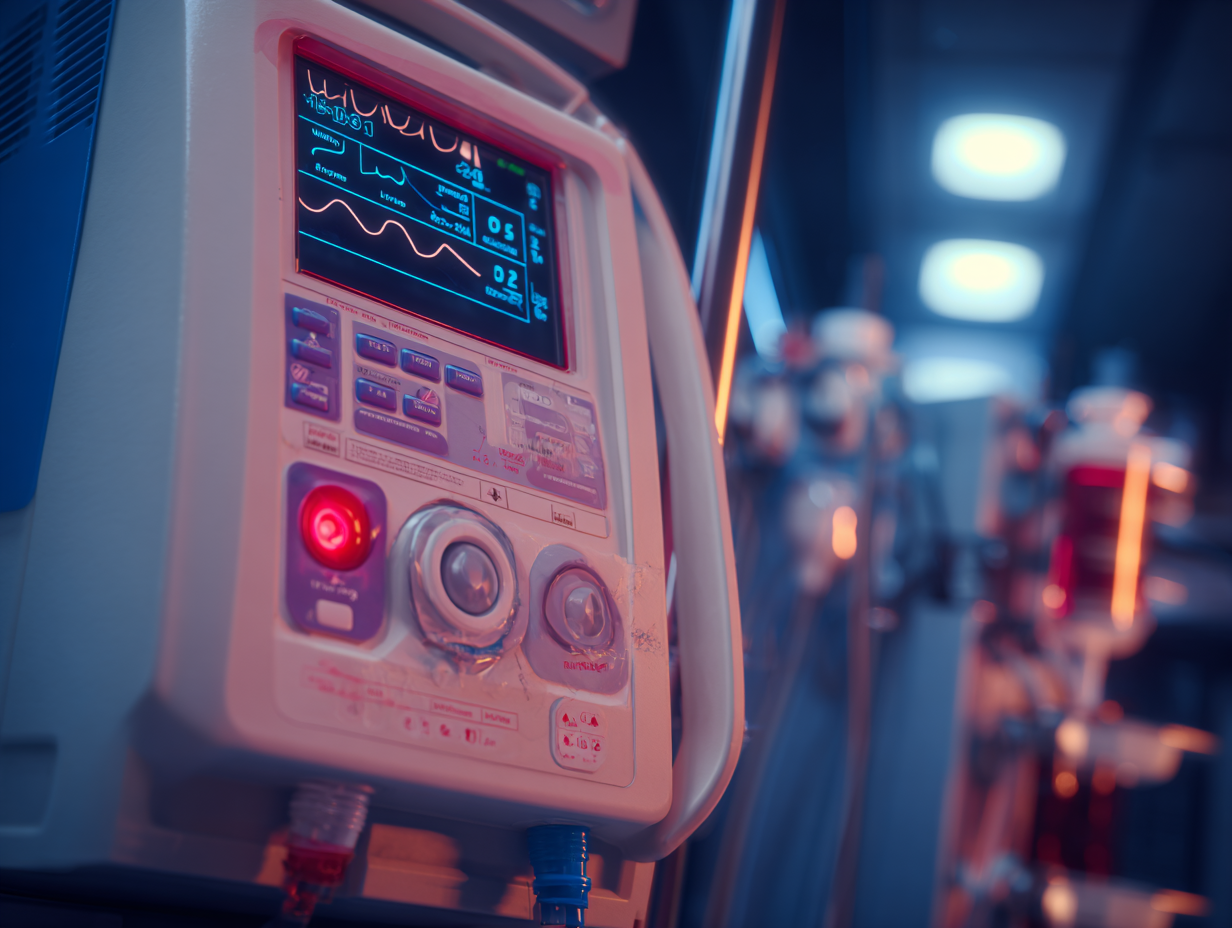While the heart-lung machine was originally developed in concert with open heart surgery, its adaptation for ECMO (Extracorporeal Membrane Oxygenation) has allowed the technology to evolve far beyond its initial scope. The versatility of this therapy is not widely recognized and extends well beyond cardiac care. Because of the interconnectedness of the cardiac, respiratory, and circulatory systems, conditions that impact one or all of these systems can be supported with the use of ECMO.
Indeed, ECMO has two primary modes: VV (Veno-Venous, which supports the lungs, and VA (Veno-Arterial), which supports the heart and lungs. Depending on the patient’s condition, ECMO can adapt to a range of clinical needs. Additionally, as research and technology progress, new applications for ECMO are continually being discovered and implemented. One of the most recent and notable examples is its use in treating severe cases of COVID-19, where it played a crucial role in managing respiratory failure in patients affected by the virus. With its expanding scope and evolving capabilities, the future of ECMO holds promising potential for even broader applications in healthcare. Below are eight diverse conditions where ECMO is proving to be a critical, often life-saving intervention.
1. Cardiac Arrest
Cardiac arrest occurs when the heart suddenly stops beating, leading to a cessation of blood flow to the brain and other vital organs. This can be due to various causes, including severe heart rhythm disturbances, heart attacks, or respiratory arrest. Immediate treatment is critical for survival and typically involves cardiopulmonary resuscitation (CPR) and defibrillation. However, in cases where standard resuscitation efforts are unsuccessful, ECMO can be employed as part of an advanced resuscitative strategy. Known as Extracorporeal CPR (ECPR), this approach uses ECMO to restore circulation and oxygenation when the heart is unable to resume effective pumping on its own. ECPR provides a bridge of support, maintaining blood flow and oxygen delivery to the body, which can be vital in preventing irreversible organ damage while the underlying causes of the cardiac arrest are addressed.
ECPR has proven to be a dramatic improvement compared to conventional CPR. With conventional CPR, the chance of leaving the hospital with intact neurological function is less than 10%, while with ECPR it is over 40%! The use of ECMO as an adjunct in patients who are unresponsive to conventional CPR provides superior circulatory support with oxygenated blood to the brain and supports the patient to allow time for diagnostic and therapeutic procedures to be performed.
2. Acute Respiratory Distress Syndrome (ARDS)
Acute Respiratory Distress Syndrome (ARDS) occurs when fluid accumulates in the tiny, elastic air sacs of the lungs, causing severe respiratory failure. Common causes include inflammation or severe infections like COVID-19 or influenza. Treatment usually involves oxygen therapy or mechanical ventilation to assist breathing, but sometimes, the lungs are too damaged to exchange oxygen and carbon dioxide effectively. In these cases, ECMO can serve as an artificial lung, oxygenating the blood outside the body and reducing the strain on the lungs, allowing them time to rest and heal.
3. Inflammation of the heart muscle (Myocarditis)
Myocarditis is characterized by inflammation of the heart muscle, often triggered by infections, immune system disorders, or toxins. This inflammation can disrupt the heart’s electrical system and impair its ability to pump blood effectively. Typical treatments include medications to manage symptoms, reduce inflammation, and address any underlying causes. In severe cases where myocarditis leads to heart failure or arrhythmias, ECMO can be a life-saving intervention that supports the heart and circulation, providing time for the inflamed heart muscle to heal and recover its function.
4. Trauma
Trauma, particularly severe chest trauma, can impair heart function in several ways. Direct injury to the heart muscle or lung tissue, such as in myocardial contusions or pulmonary contusions, can disrupt their respective abilities to contract effectively and oxygenate the blood. Trauma can also cause cardiac tamponade, where blood or fluid accumulates in the sac around the heart, hindering the heart’s ability to expand and fill with blood. Additionally, significant blood loss or damage to major blood vessels can lead to shock, reducing blood flow to the heart and impairing its function. In all of these situations, the heart might struggle to pump blood efficiently throughout the body, making ECMO an important therapy to stabilize the patient for recovery or surgery.
5. Neonatal congenital abnormalities
A small percentage of infants are born with structural heart issues, such as abnormal connections between heart chambers (transposition of the great arteries), underdeveloped sections of the heart (hypoplastic left heart syndrome), or a defect in the diaphragm that allows abdominal organs to move into the chest (congenital diaphragmatic hernia). These issues can drastically affect oxygen and nutrient delivery throughout the body. Surgeries and catheter-based procedures are often effective at correcting/palliating the defect, but ECMO can maintain vital circulation and oxygenation as a bridge to surgery or during the post-operative recovery period.
6. Cardiomyopathy
Cardiomyopathy is a group of diseases affecting the heart muscle in which the muscle becomes enlarged, thickened, or rigid. It can occur as a result of long-term high blood pressure, infections, or damage from a heart attack. Although cardiomyopathy is a chronic condition, it can sometimes lead to acute heart failure or cardiogenic shock, where the heart’s ability to pump blood is suddenly and severely compromised. In these critical scenarios, ECMO can provide vital support by taking over the heart’s pumping function, allowing the heart muscle to rest and potentially recover. ECMO is typically used as a temporary measure in such emergencies or as a bridge to more definitive treatments like heart transplantation.
7. Pulmonary embolism (PE)
Pulmonary embolism (PE) is a serious condition that occurs when a blood clot travels to the lungs, blocking one or more of the pulmonary arteries. This blockage can severely hinder the heart’s ability to pump blood to the lungs. The lung’s ability to provide oxygen to the blood is therefore reduced, leading to respiratory distress and reduced oxygen levels in the body. Conventional treatments include anticoagulant therapy to prevent more clots, thrombolytic therapy to break down the ones already present, and sometimes surgical interventions to remove them altogether. When these treatments fail or when there is a significant strain on the heart, ECMO can prevent further damage by taking over the function of the heart and lungs while other treatments work to resolve the clot.
8. Sepsis
Sepsis is a life-threatening condition that arises when the body’s response to an infection causes injury to its own tissues and organs. It can lead to a cascade of changes that damage multiple organ systems, making it difficult for them to function properly. In severe cases, sepsis can progress to septic shock, where blood pressure drops dramatically, impairing blood flow to vital organs. In some cases, ECMO can be a crucial intervention to maintain tissue oxygenation and blood circulation as the body recovers from the infection. However, this application is still debated and is not utilized at all ECMO centers today.




